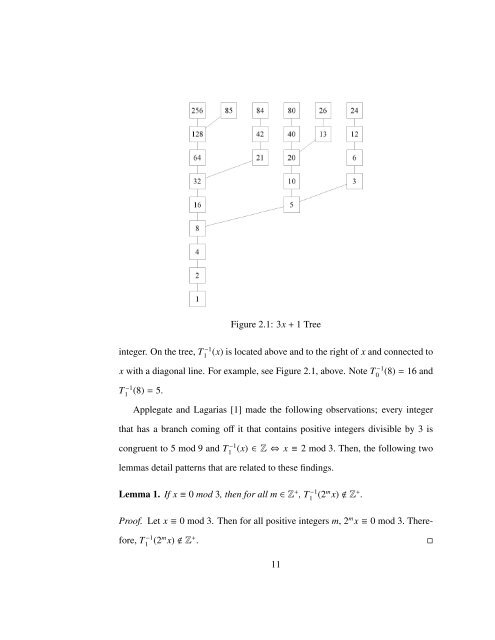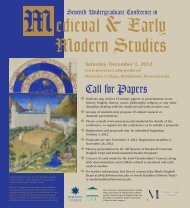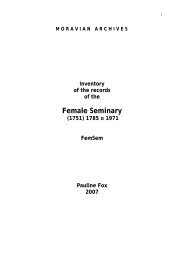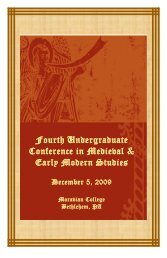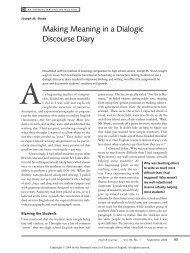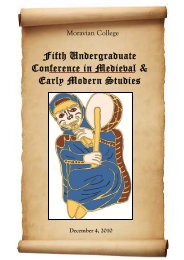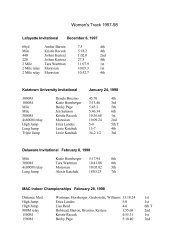Explorations of the Collatz Conjecture - Moravian College
Explorations of the Collatz Conjecture - Moravian College
Explorations of the Collatz Conjecture - Moravian College
You also want an ePaper? Increase the reach of your titles
YUMPU automatically turns print PDFs into web optimized ePapers that Google loves.
Figure 2.1: 3x + 1 Tree<br />
integer. On <strong>the</strong> tree, T −1<br />
1<br />
(x) is located above and to <strong>the</strong> right <strong>of</strong> x and connected to<br />
x with a diagonal line. For example, see Figure 2.1, above. Note T −1<br />
0<br />
(8) = 16 and<br />
T −1<br />
1<br />
(8) = 5.<br />
Applegate and Lagarias [1] made <strong>the</strong> following observations; every integer<br />
that has a branch coming <strong>of</strong>f it that contains positive integers divisible by 3 is<br />
congruent to 5 mod 9 and T −1<br />
1<br />
(x) ∈ Z ⇔ x ≡ 2 mod 3. Then, <strong>the</strong> following two<br />
lemmas detail patterns that are related to <strong>the</strong>se findings.<br />
Lemma 1. If x ≡ 0 mod 3, <strong>the</strong>n for all m ∈ Z + , T −1<br />
1 (2m x) Z + .<br />
Pro<strong>of</strong>. Let x ≡ 0 mod 3. Then for all positive integers m, 2 m x ≡ 0 mod 3. Therefore,<br />
T −1<br />
1 (2m x) Z + . □<br />
11


